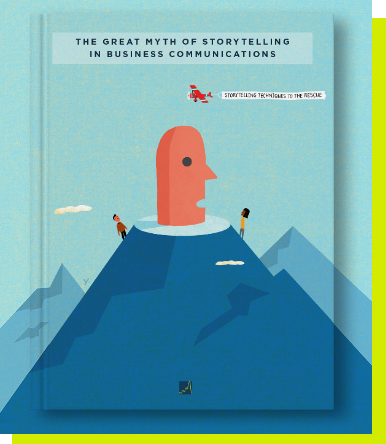Our Jam
What does a shovel have to do with 📖 storytelling from a communications consultancy❔
Everything.
Many of our clients come from the B2B tech world where hearts aflutter from inventing a way to increase the spin-torque efficiency of a memory device.
While these types of stories hold great importance to the people who use a given technology, they typically aren’t going to interest journalists from business publications and other mainstream media.
That’s where the shovel comes in.
We believe the story is always there, but they don’t arrive on a platinum platter for all to see.
Instead, the process for finding these narratives can be akin to an excavation.
It requires digging and digging and sometimes more digging. The typical public relations agency undervalues the expertise that goes into this form of discovery, the interviewing techniques, research, dot-connecting logic and that scientific quality called persistence.
In contrast, we’ve developed a training curriculum and methodology that specifically guides our account teams in the discovery process. Often, you go from Point A to Point B to Point C, which ultimately gets you to Point D where the good stuff resides.
This slide deck walks you through our mentality to finding client stories that drive our communications campaigns.
Our Take on Storytelling
The concept of storytelling has been trending in the communications industry for years. Every agency with a pulse now touts its storytelling chops.
Yet, there’s one not-so-little detail that no one talks about. When it comes to business communications, storytelling by its classic definition — a narrative with a start, an end, and something going horribly awry in between — typically can’t be applied.
Whether it’s pitching a journalist or content for owned media, inserting failure into narratives isn’t exactly a natural act for companies. Do you really want to talk about the bad stuff? Didn’t think so.
Still, given a choice between dull or interesting,
people will gravitate toward interesting every time.
That’s the genesis of what we’ve come to call The Periodic Table of Business Storytelling, essentially our methodology for baking storytelling into content.
Years ago, we took on the task on reverse-engineering a ton of articles in business publications to figure out how journalists lift their writing. That became the basis for our storytelling methodology, workshops and ultimately the Periodic Table of Business Storytelling.
There’s a reason these techniques are particularly effective in media relations. When you develop content and the supporting pitch with, say, contrast and anecdotes, the approach aligns with how journalists construct their stories.
Let’s zero in on contrast as a storytelling technique. As pointed out earlier, the classic story arc in which something goes horribly wrong has limitations. When was the last time a CEO barked,
“OK, let’s leverage these failures in our PR program this coming quarter”?
Yet, the failure story is really one of contrast — failure vs. success — which works for companies.
The old way vs. the new way.
Before vs. after.
With vs. without.
All deliver a form of contrast that adds oomph to the content. The greater the gap between the points, the more drama or tension in the narrative.
As a second example, we turn our attention to the humble anecdote:

Executives often perceive anecdotes as fluff and put the kibosh on such content before it sees the light of day. Yet journalists, the masters of industrial-grade storytelling, have honed the use of anecdotal content to an art form. Breaking down feature stories by content type, our research shows 14% to 23% is anecdotal. That’s why we emphasize anecdotes in constructing content for our clients.
Back to the big picture —
Our Periodic Table of Storytelling delivers a repeatable process to develop content that lands with the target audience. We started off saying, “The story is always there.”
What we’re really saying is
“Interesting stuff is always there.”
Mike Butcher, an editor at TechCrunch, nicely captures this concept: “‘The man that bit the dog’ is far more interesting than ‘the dog that bit the man.’”

For a deeper look at our version of brand storytelling, check out our book on the quest for conversational language, humanity and other ways to add oomph to content.
Spoiler alert, it helps to be brave.